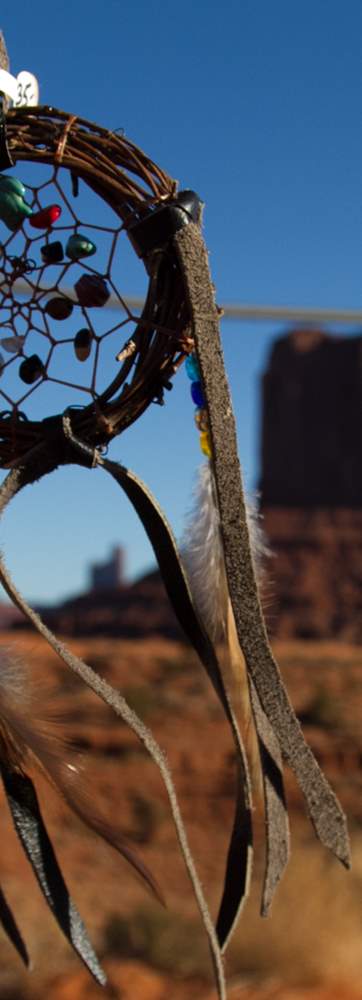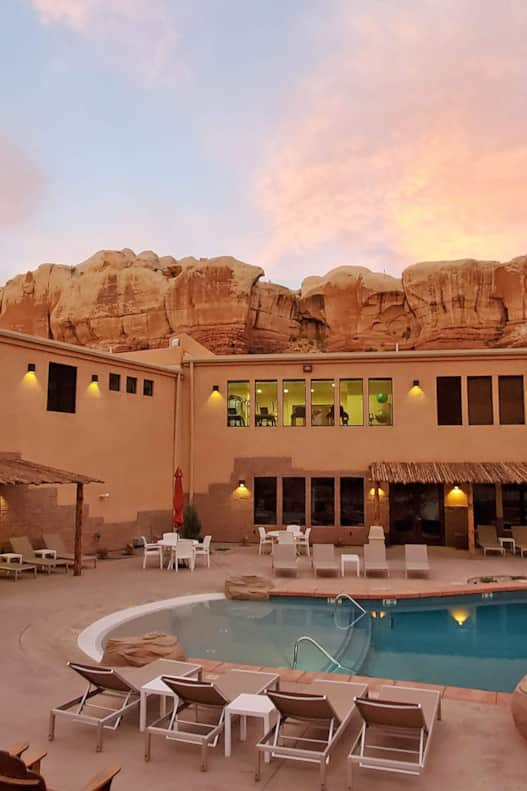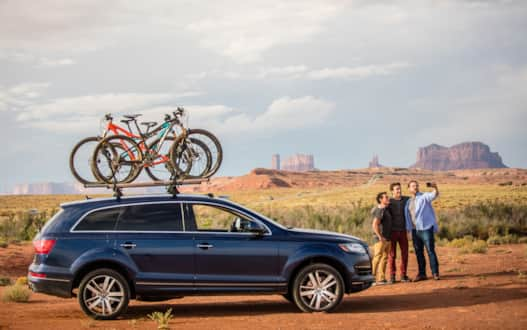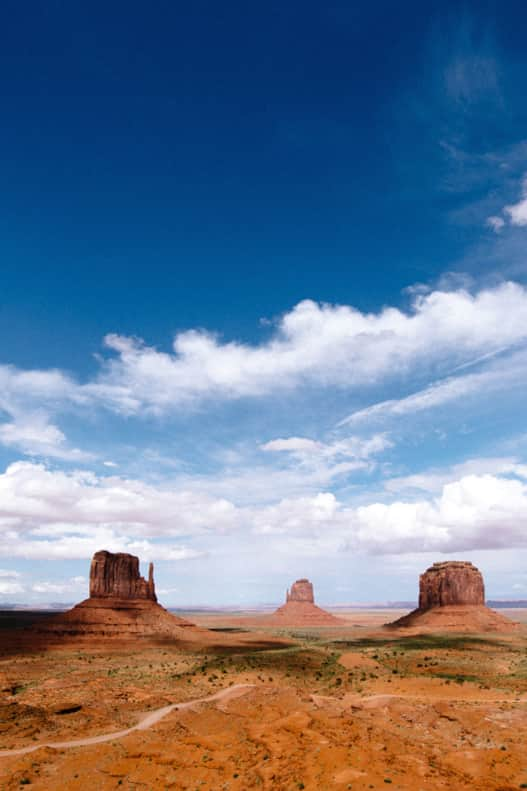
Monument Valley Navajo Tribal Park
Things to Do in Monument Valley
-
Experience the Monument Valley Scenic Drive
A scenic drive around Monument Valley is one of the area’s most popular activities, and for good reason. High-clearance vehicles are recommended to navigate the dirt, gravel and red rock road.
-
Hike the Wildcat Trail
The Wildcat Trail is a 3.2-mile loop hike (4 miles total, including the return to the trailhead and parking area) into one of the most scenic areas that Monument Valley has to offer.
-
Take a Guided Jeep Tour
Most backcountry and off-road travel in Monument Valley is prohibited unless you’re with a licensed Navajo guide. Guided jeep tours are a great way to take in the iconic landscape. It is just as much fun for kids as adults, and a great morning or afternoon activity for families.
-
View Forrest Gump Point
Forrest Gump — the protagonist of the 1994 Oscar-winning movie of the same name starring Tom Hanks — had run for three years, two months, 14 days, and 16 hours when he reached the hill along U.S. Route 163 that looks toward Monument Valley.

Goulding's Lodge is tucked under soaring rimrock cliffs two miles west of the Monument Valley.
Photo: Austen Diamond

Bluff Dwellings Resort & Spa pampers road trippers with a desert oasis built into sandstone cliffs.
Photo: Bluff Dwellings Resort
Where to Stay: Hotels, Lodging and Camping
Find 4-star hotels, bed and breakfasts, roadside motels and campgrounds for tents and RVs — pet-friendly and family-friendly, too.
Goulding's Lodge: Villas, RV Parks, Cabins
Goulding's Lodge, in Oljato-Monument Valley, offers villas with views, apartments with kitchenettes, a trading post, an indoor pool and an onsite restaurant serving authentic southwestern and Navajo cuisine. Tucked under soaring rimrock cliffs two miles west of the Monument Valley, Goulding's also boasts a campground with RV hookups, a pool and separate cabins. Explore their guided tour opportunities as well.
The View Hotel: Modern Cabins in Monument Valley
The View Hotel is the only lodging within Monument Valley Navajo Tribal Park. Make reservations well in advance to score premium modern cabins with sensational valley views.
Sleep in Mexican Hat or Bluff: The Nearest Utah Towns to Monument Valley
Mexican Hat, Utah, is a short 20-mile drive from the visitor center. Head northeast on U.S. Route 163 where you can stay at Hat Rock Inn, Mexican Hat Lodge or San Juan Inn and Trading Post. Stop for a bite to eat at Hat Rock Café, Singin’ Steaks or Old Bridge Grill Cafe.
Or drive 50 miles north to Bluff, where Bluff Dwellings Resort & Spa pampers road trippers with a desert oasis built into sandstone cliffs, or you can enjoy the bed and breakfast amenities at the Desert Rose Resort.
Camp at Goosenecks State Park
Prefer to camp? Goosenecks State Park (32 miles from Monument Valley Visitor Center) offers campsites for travelers en route to Monument Valley.

Roadtrippers often extend their Monument Valley trek with adventures in other parks.
Photo: Michael Kunde

Most people spend about three hours driving Monument Valley’s 17-mile scenic loop road.
Photo: Austen Diamond
Where is Monument Valley?
Monument Valley Tribal Park spans over 90,000 miles within Navajo Nation along the Utah and Arizona border. It’s vast and remote, deserving plenty of time to explore. From the north, the Utah towns of Mexican Hat, Bluff, Blanding and Monticello provide gateway town amenities for lodging, dining, outfitters, gas and groceries. Kayenta is the closest Arizona town to Monument Valley’s south.
Getting to Monument Valley
The Monument Valley Tribal Park Visitor Center is about a seven hour drive from the Salt Lake City International Airport, seven hours from the Las Vegas airport, five hours from the Phoenix airport and five hours from the St. George Regional Airport in St. George, Utah.
Roadtrippers often extend their Monument Valley trek with adventures in other parks. The visitor center is within an hour's drive of Goosenecks State Park and Valley of the Gods, and under two hours from Bears Ears National Monument, Four Corners and Lake Powell’s Wahweap Marina. Less than three hours by car you'll find Arches and Canyonlands national parks. Plan on a four-hour car ride from Zion National Park and 4.5 hours from Bryce Canyon National Park.
How Long Does It Take to Drive the Loop?
Most people spend about three hours driving Monument Valley’s 17-mile scenic loop road. Don’t forget to factor in these five scenic stops along the way.
What's Nearby?
-

Mexican Hat
Mexican Hat sits along the San Juan River among impressive rock formations. The town gets its name from a rock formation that resembles an overturned sombrero. Get free travel guides and maps for planning your next Utah vacation.
-

Bears Ears National Monument
A pair of towering buttes stand against beautiful scenery. The twin buttes are so distinctive that in each of the native languages of the region their name is the same: Hoon'Naqvut, Shash Jáa, Kwiyagatu Nukavachi, Ansh An Lashokdiwe, or in English: Bears Ears.
-

Valley of the Gods
Perhaps one of the most intriguing names of all of the destinations in San Juan County is the Valley of the Gods. This special area attracts individuals looking for idyllic sandstone structures.
























